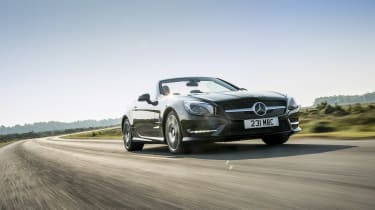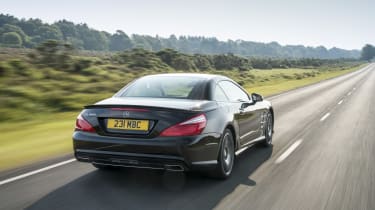Mercedes SL review (R231, 2011-2020) – ride and handling
Surprisingly good fun, particularly in AMG trim, the SL is a roadster of broad talents
It’s heartening to see that the SL range still uses hydraulic, rather than electric power steering, but as has always been the case this is no guarantee of feedback. We’ve driven the SL 500 and the SL 63 so far, and neither transmit much information from the road surface to your fingertips.
This robs you of the sensation of feeling instantly at home with the steering’s rate of response (particularly if the roads are damp, when there’s very little sign from the steering of understeer or the onset of oversteer), and weighting isn’t ideal either - what feels just about meaty enough at normal pace doesn’t translate into any extra weight when you start loading up the chassis, which can be disconcerting.
You do get used to it however, and soon you’ll discover a chassis that wears the virtues of a front-engine, rear-drive setup on its sleeve: throttle adjustability, and balance. It’s difficult to explore either if you leave the car in its Comfort or Sport driving modes, but Sport+ releases the traction and stability control functions enough to let you start controlling the car from the rear axle.
There are other positives too: the predominantly aluminium structure feels very stiff, whether the roof is up or down, and the ride on the Active Body Control adaptive suspension is very pliant and can even minimise body roll by counteracting it in bends. The brakes take a hammering, though - the very lightest SL, the 400, still weighs in at 1735kg, and that rises to 1950kg for the SL 65. The smell of hot brakes is ever-present after a hard drive, and the regular cast-iron discs do fade - though carbon ceramics are optional on the AMGs.





